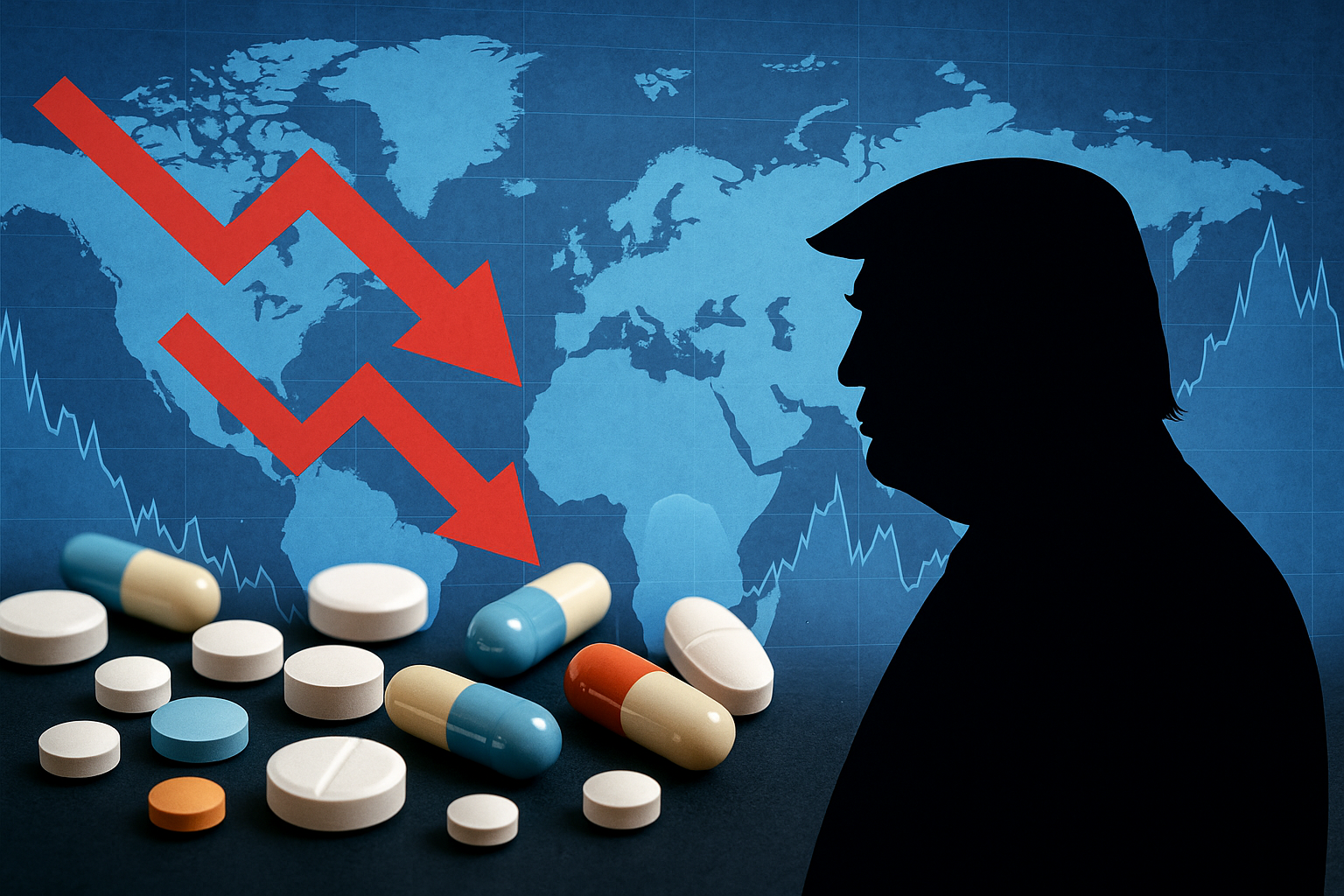President Donald Trump has once again taken aim at global supply chains. Starting October 1, all branded or patented pharmaceutical products entering the U.S. will face a 100% tariff. The message is clear: build in America or pay the price. Companies that have already started construction on U.S. plants will be spared. This latest tariff is part of Trump’s broader effort to bring back manufacturing and reduce America’s reliance on foreign-made drugs. For decades, U.S. pharma firms have shifted production overseas to cut costs. Now, Trump is pushing them to reverse course. While some major players like Eli Lilly, Johnson & Johnson, and AbbVie already invest in domestic plants, others may face steep expenses or supply disruptions. The administration argues the move strengthens national security, but critics warn it could backfire by raising drug prices and worsening shortages.
Tariffs Hit Pharma Stocks Across Asia
Markets in Asia reacted swiftly and sharply. Investors dumped pharma shares as Trump’s announcement rippled through trading floors from Tokyo to Seoul. The Topix Pharma Index slid 1.47%, with Daiichi Sankyo and Chugai Pharmaceutical leading the losses. In South Korea, heavyweights Samsung Biologics and SK Biopharmaceuticals also tumbled. Hong Kong’s Alibaba Health and JD Health joined the sell-off. Many Asian companies rely heavily on U.S. exports, so a 100% tariff is a serious blow. Building new plants in the U.S. takes years, meaning short-term pain for regional producers. Beyond pharma, Trump also unveiled fresh tariffs on furniture and trucks, signaling that more sectors could be next. Investors in Asia grew cautious, and the broader markets softened. The move added uncertainty at a time when inflation, weak demand, and volatile bond yields were already testing investor confidence.
European Pharma Feels the Tariff Shock
Across Europe, the story was similar. The Stoxx Europe 600 Healthcare Index dipped as investors digested the news. Major names like Novo Nordisk, Zealand Pharma, and Orion lost ground. While the wider market held steady, pharma was firmly in the red. JP Morgan analysts tried to calm fears, suggesting the damage could be contained if firms expand U.S. manufacturing. Still, the timing is tough. Many European drugmakers already face margin pressures, regulatory hurdles, and supply chain costs. Trump’s tariff adds another layer of complexity. For firms with little presence in the U.S., the financial hit could be substantial. The European Union, meanwhile, is preparing its own trade response, including possible tariffs on Chinese steel. This tit-for-tat environment underscores the fragility of global trade. For now, Europe’s pharma sector faces higher uncertainty and lower investor appetite.
Tariffs Stir Tension and Risk in Global Supply Chains
Pharma supply chains are some of the most complex in the world. Active ingredients, packaging, and quality control often cross multiple borders. Trump’s tariffs could unravel this balance. Drugmakers may struggle to move entire production lines to U.S. soil. Analysts warn reshoring is costly and could take years. In the meantime, patients might face higher prices or fewer options. Johnson & Johnson’s CEO cautioned that tariffs create disruptions and potential shortages. Experts also fear reduced capital for research and innovation as companies divert funds to offset new duties. For Trump, the policy aims to secure American jobs and independence. Yet, in practice, it risks destabilizing a sector that relies on precision, scale, and global collaboration.
Stock Market Caught Between Tariffs and Inflation Fears
The broader stock market remained cautious. Futures were flat as traders awaited key inflation data. The Federal Reserve’s preferred price index could sway expectations for upcoming rate cuts. Meanwhile, rising Treasury yields added pressure, and major tech names like Tesla and Oracle extended declines. The S&P 500 and Nasdaq closed lower for a third day, reflecting investor unease. Tariffs have added a new layer of complexity to a market already balancing growth, inflation, and monetary policy. Some analysts see the pullback as a healthy correction, especially in overvalued sectors. Still, volatility could linger as traders digest Trump’s latest trade offensive. For now, investors are treading carefully—caught between a White House betting on tariffs and a Fed still fighting inflation.
